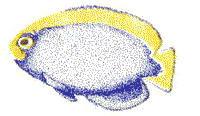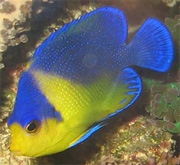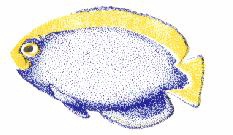|
Killer Algae's ?
Written by Thomas A. Frakes
( Submitted during the hearing in California concerning the proposed
bill # 1334 )
Many people have read of the outbreak of Killer Algae (Caulerpa taxifolia)
in the Mediterranean Sea and more recently in Southern California. For
a number of years the press and a few scientific journals have reported
that C. taxifolia was going to destroy the environment by smothering all
life in it¹s path as it relentlessly spreads. Fish and other organisms
would disappear leading to serious economic harm to the areas. Recently
the
popular book Killer Algae was released by Alexander Meinesz who is
the principle source of information on the event. Based on the reports
of all the terrible consequences that will follow the recent finding of
C. taxifolia in S. California, the State has spent an estimated million
dollars and counting to eradicate it. Now there is a bill to ban not only
this species but also the entire genus from the State of California. Before
going any farther on this path to ban all Caulerpa from the State of California
please consider all the facts. This ban could have dire
consequences on the marine aquarium trade in California and the rest
of the country that depends on shipments through Los Angeles. I ask that
you objectively look at the emerging scientific data that clearly refutes
the claims that C. taxifolia will cause an ecological disaster.
First it should be noted that the many species of Caulerpa grow all
around the world in tropical and sub-tropical seas. Many species are native
to Florida and Hawaii including C. taxifolia. This Killer Algae is also
found off both coasts of Africa, the Red Sea, Indian Ocean and the Pacific
from Japan to Australia to Hawaii. Caulerpa alga occasionally bloom up
locally
and then die off just as suddenly. They are particularly successful
in areas of pollution with anoxic, nutrient-rich sediments, such as mud
bottoms near sewage outfalls. Often these areas are no longer suitable
for seagrasses and the bottom deteriorates into a barren muck bottom. Caulerpa
can actually thrive in this environment and help reclaim it. When a meadow
of any species of Caulerpa is found it is often associated with a source
of pollution (Raloff 2000, Chisholm et al. 1996).
The claims that Killer Algae will over grow all substrates and kills
seagrass beds has been shown to be greatly exaggerated or even totally
false. A recent study published in a top peer reviewed journal, Journal
of Phycology (Jaubert et al. 1999), found no deleterious effects to seagrass
beds in the Bay of Menton (France) since the colonization of C. taxifolia.
This study, which covered eight years, found that the polluted areas that
the Caulerpa populated where actually improving and seagrass (Posidonia)
was starting to return to these areas where it used to live. Rather than
kill off the seagrass it actually enhanced it. Dr. Susan Williams, who
is in
favor of the ban, cited this report in a recent article "Caulerpa Invasions"
(She failed to list it in her bibliography). She however went on to express
her opinion that the eelgrass in San Diego suffers from poor water quality
and other stresses which "might make the local eelgrass more susceptible
to invasions." She however does not seem to take into account the fact
that in
the Mediterranean study the improvements to the substrate actually
improved the health of the seagrass beds. Thus it is entirely possible
that the stressed beds in San Diego might actually do better after a period
of Caulerpa colonization. This is because Caulerpa has been shown to be
able to extract nutrients from polluted substrates (Chisholm et al. 1996)
that have been shown to inhibit the growth of seagrasses. Throughout the
tropics there are many places where eelgrass and Caulerpa sp. co-exist.
Certainly Caulerpa can grow on many types of substrates but the areas where
it forms the smothering meadows pictured in the press releases are typically
polluted bays near sewage outfalls.
The areas near the wastewater discharge sites in the Mediterranean have
been studied for years. Meinesz complained as early as 1978 that pollution
was killing the seagrasses off Monaco and adjacent France. This was years
before he started blaming Caulerpa for killing the seagrass beds. A major
concern has been the enormous amount of bottom that has been reported to
be smothered with Caulerpa taxifolia up to 10,000 hectares by some newspaper
reports. The Bay of Menton study (Jaubert et al. 1999) used a
combination of aerial photography with high-resolution multispectral imagery
verified with SCUBA diving to map the Caulerpa beds, Posidonia beds and
other bottom types. This work is continuing and so far 75 % of the area
claimed to have been affected by Caulerpa have been mapped. A preliminary
review of this data shows that these claims of smothering thousand of hectares
have been exaggerated by 100 times or more (Jaubert 2001, personal communication.).
The mapping will resume this June and soon the truth about the extent
of damage will be published, not in the newspapers, but in respected peer
re-viewed journals.
Another concern has been the claim that fish populations and biodiversity
would drop when Caulerpa smothered the bottom. The biodiversity and fish
populations of some of the affected areas were already greatly reduced.
This was due to the mud bottom habitat that resulted from wastewater discharge
and the decline of the seagrasses. Recent work in Italy from Relini et
al. (1998a, 2000) has compared areas colonized with C. taxifolia with nearby
seagrass beds. The fish biodiversity and biomass were found to be equal
or greater on two Caulerpa sites than the two seagrass sites. Thus the
predictions that fisheries would suffer are also false. Relini et al. (1998b)
also looked at epiphytic fauna on beds of C taxifolia and the seagrass
Cymodocea nodosa. When they compared the two in terms of standard bottom
surface, they found "species richness and diversity were higher on the
Caulerpa". These papers show that the predictions of ecological doom were
unfounded.
There have been claims that the Mediterranean strain was genetically
altered while kept in public aquariums in Europe but this is just science
fiction. I may have been selected to withstand the rigors of tropical aquarium
life. It is actually quite difficult to collect and successfully acclimate
species of Caulerpa to aquariums. On average about 90% of the
material dies quickly.
If Killer Algae (C. taxifolia) is not so bad, what was all the fuss
about? It should be noted that since the alarms went out about this "disaster"
there have been many more research grants to study the "problem". Since
grant money in this field is scarce those involved have certainly benefited
from this crisis.
I contend that Caulerpa taxifolia is not the great threat portrayed
in the press and soon this will be proven to be the case. However the Mediterranean
strain of C. taxifolia is already on the Federal List of Noxious Aquatic
Species. It is already illegal to import this cold tolerant strain. The
proposal to ban the entire genus is totally unfounded. One species, C.
racemosa or grape algae, that has been targeted as a "bad" species is native
to the Gulf of California. If it could tolerate the climate it would surely
have found it¹s way up the coast. It also ranges all around the world
in the tropics. The Baja Peninsula has four native species (James Norris
2001-
personal communication). More species are found down the Mexican coast
and may be residents of some of the East Pacific Islands. If the risks
from C.taxifolia turn out to be greatly exaggerated then extending a ban
to the entire genus is ludicrous.
When I first became involved with this topic I agreed with the proposals
to ban the Mediterranean strain of Caulerpa taxifolia but after a thorough
review of the emerging literature even that ban now starts to look unnecessary.
I ask you to carefully consider the serious impact this ban could have
on the private and public aquariums, retailers and wholesalers in California
and the rest of the country that depends on products coming
through California.
Respectfully submitted,
Thomas A. Frakes
Technical Consultant to Aquarium Systems/ Marineland Aquarium Products
Selected Bibliography
Adams, Nancy, 1994. Seaweeds of New Zealand. Canterbury Univ. Press,
Christchurch, New Zealand, __ pp.
Benzie, John, E.Ballment, J. Chisholm, and J. Jaubert, 2000. "Genetic
variation in the green alga Caulerpa taxifolia". Aquatic Botany 66:131-139.
Bolton, John Algae-L @ listserv. heanet.ie June 1,2000. Botany
Dept.,
Univ. of Cape Town, S. Africa. <bolton @ botzoo.uct.ac.za>
Cribb, A.B.,1996. Seaweeds of Queensland, a naturalist¹s guide.
Queensland
Naturalist¹s Club, Inc. Brisbane, 130 pp.
Chisholm, John, J. Jaubert and G.Giaccone, 1995. "Caulerpa taxifolia
in the
northwest Mediterranean: introduced species or migrant from the Red
Sea".C.R. Acad. Sci. Paris, Sciences de la Vie/Life Sciences, Vol.
318:
1219-1226.
Chisholm, John, C. Dauga, E. Ageron, P. Grimont, J. Jaubert, 1996. "
ŚRoots¹
in mixotrophic algae" Nature Vol. 381, May 30, p. 382.
Chisholm, John, F. Fernex, D. Mathieu, and J. Jaubert, 1997. "Wastewater
discharge, seagrass decline and algal proliferation on the Cote d¹Azur".
Marine Pollution Bulletin, Vol.34(2), pp.78-84.
Chisholm, John, Jean Jaubert, 1997. "Photoautotrophic metabolism of
Caulerpa
taxifolia (Chlorophyta) in the N.W. Mediterranean". Mar. Ecol Prog.
Ser.
Vol. 153:113-123.
Chisholm, J. and J. Jaubert, 1999. "Comments on article of Olsen et
al.(1998):¹Mediterranean Caulerpa taxifolia and Caulerpa mexicana
are not
con-specifics¹". J. Phycol., 35:438-440.
Chisholm, John, M.Marchioretti and J. Jaubert, 2000. "Effects of low
water
temperature on metabolism and growth of a subtropical strain of Caulerpa
taxifolia (Chlorophyta)". Mar. Ecol. Prog. Ser. Vol. 201:189-198.
Ferrer, E., A. Gomez Garreta, M.A. Ribera, 1997. "Effects of Caulerpa
taxifolia on the productivity of two Mediterranean macrophytes". Mar.
Ecol.
Prog. Ser. 149: 279-287.
Gayol, P., C. Falconetti, J. Chisholm, and J. Jaubert,1995. "Metabolic
responses of low-temperature acclimated Caulerpa taxifolia (Chlorophyta)
to
rapidly elevated temperature". Botanica Marina, Vol. 38:61-67.
Jaubert, Jean, 1997. "Sur l¹expansion de Caulerpa taxifolia en
Mediterranee". Extrait des actes du Seminiare Scientifique International.
Academie de Sciences de Paris: 13-15 Mars, 1997: 209-217.
Jaubert, Jean, J. Chisholm, D. Ducrot, H. Ripley, L.Roy, and G.
Passeron-Seitre, 1999. "No deleterious alterations in Posidonia beds
in the
Bay of Menton (France) eight years after Caulerpa taxifolia colonization".
J. Phycol. 35: 1113-1119.
Jaubert, Jean 2000. "Being objective about ŚKiller Seaweed¹". Letter
to
Caribbean-Biodiversity. (http:// fi.egroups.com /message/
caribbean-biodiversity/824).
Lipkin, Y., 1985. "Algae in the Gulf of Eilat", In: Plants and Animals
of
the Land of Israel, Vol. 6 Flowerless Plants. pp 97-100 (In Hebrew).
Littler, Diane and Mark Littler, 2000. Caribbean Reef Plants. Offshore
Graphic, Washinton, D.C., 542 pp.
Magruder, William and Jeffrey Hunt,1979. Seaweeds of Hawaii, a photographic
identification guide. The Oriental Publishing Co. Honolulu, HI , 117
pp.
Meinesz, Alexander, 1999. Killer Algae. Univ. of Chicago Press, Chicago,
360
pp.
Norris, James, 2001. Personal Communication, Smithsonian Institution,
Marine
Botany, 3/27/01. Caulerpa species of the Gulf of Calif. and Baja.
Raloff, J., 2000. "Algal bloom is smothering Florida coral". Science
News,
Vol.157, June 10, 2000.
Relini, G., M.Relini, G. Torchia, 1998a. Fish biodiversity in
a Caulerpa
taxifolia meadow in the Ligurian Sea. Ital. J. Zool., 65 Suppl. 465-470.
Relini G., A. Molinari, M. Relini, and G.Torchia, 1998b. Comparison
in
epiphytic fauna of Caulerpa taxifolia and Cymodocea nodosa. Biol. Mar.
Medit., 5 (1): 185-195.
Relini,G., M. Relini and G. Torchia, 2000. "Fish population changes
following the invasion of the allochthonous alga Caulerpa taxifolia
in the
Ligurian Sea (N.W. Mediterranean)". ICES-CM 2000/ U:17. (www. ices.dk
/asc/2000 /abstracts/list.u.htm).
Reyna, Gabriela and R. Rodriguez, " Macroalgas del arricife Coralino
de Cabo
Pulma-Los Frailes, BCS, Mexico". ( www . ots duke. edu/ tropibiojnl).
Scrosati, Ricardo, E.Serviere, G.Mendoza and P. Cruz, 1999. "Ecology
and
Genetics of Seaweed populations from Southern Baja California". Abstract
No.
5289, Poster No. 1148, from Intl. Bot. Congress 1999.
Yip, Marcela, 1999. "Essay about Caulerpa taxifolia (or C. xenogigantia
= C.
godzilliana)". In Colloquial Meeting of Marine Biology I.
|











